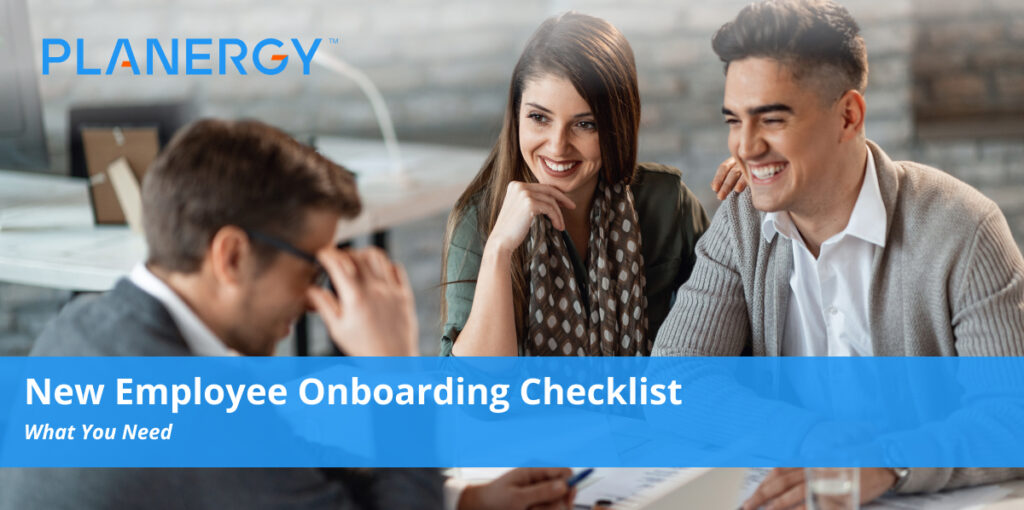For your new hires to be successful, you need an effective employee onboarding process individual employee success is in part a result of employee satisfaction engagement.
Satisfaction and engagement increase employee retention which saves your company both time and money in the short-term and over the long-term.
Employee turnover on the other hand creates chaos within your organization. Research shows the cost of replacing an entry-level employee is 30 to 50% of that person’s annual salary.
When it comes to mid and senior levels employees, it can reach 150 to 400% respectively.
Every time someone leaves the company, both morale and productivity suffer. That’s why it’s important for all businesses to hold on to their staff and one of the ways they can do this is by providing a well-designed onboarding process.
This helps educate new employers about their place within the overall company culture.
When you create a formal plan, this increases the chance that you will have a successful new hire onboarding which will produce better job performance, higher satisfaction, and increased efficiency so it’s a win-win for everyone.
Here is a checklist to make the process easier for you.
Start Before the Employee Starts
Effective onboarding starts before your employee’s first day.
Even before you hire your ideal candidate, you can get started with the onboarding process. Include plenty of information about your company and its culture in the career section on your website because this is usually the first way potential candidates interact with your organization.
Your website broadcasts your company brand to its customers, so it also needs to broadcast your employer brand to potential hires.
Implementing a talent management system sends a strong message to potential candidates that your company is invested in attracting and retaining top talent.
Make Things Official with Human Resources
If your organization has a human resources department, you’ll need to submit a job requisition document for approval before you can make your hiring decision.
The team may require background checks and drug testing before the new employee can be officially hired.
After you’ve made your choice, ask the HR team to close the open position, and remove any job postings that remain live.
Prepare New Hire Paperwork
When you provide a formal job offer, collect all of the documents your new hire has to complete on their first day, including contracts and agreements, tax documents, payroll, and any other new employee forms.
Print a copy of your employee handbook and provide the information about the company benefits package for your new employee to review.
Always include a point of contact so that if your new hire has any questions about their benefits or company policies, they know who to reach out to.
It is also helpful to print off the job description as a reminder of the company’s expectations for the position.
Always look for ways to improve your new employee onboarding checklist. Get regular input from all department heads and the human resources team.
Procure Any New Devices and Equipment the Employee Needs
If your company provides equipment for new employees, you’ll need to fill out the appropriate purchase requisitions to request all devices and equipment ahead of time to ensure that everything is ready to go on the new hire’s first day.
Consider everything from the computer and phone to their keyboard and mouse, and even business cards so that it can be hooked up and ready to use from the moment they arrive.
If you’re hired a remote worker because of COVID, you can send a package of company approved equipment to them scheduled to arrive the day before their official start date so they have time to set it up and troubleshoot any issues.
Or you can simply provide an allowance for them to upgrade any of their existing personal equipment to use over the course of their employment.
Create Accounts and Logins
Touch base with your facilities manager, accounting department, and IT team to make sure that the employee is set up and all of the relevant systems so they have access to everything they need from the beginning.
Also ensure they have any required assets to enter the building, such as a key card.
Ensure their company email is set up and collect their login credentials for the various Platforms in pools they will use to prevent trouble accessing the applications and software needed to perform their job.
Set Up the Workspace
If you’re hiring an in-house employee, you’ll need to make sure they have a clean desk and chair, and any other items they may require at their work station.
If possible, yeah there any company-branded swag, office supplies, or a simple gift for their desk to create a welcome kit.
Schedule an Orientation
Allow time in the new employee’s first-day schedule for a new hire orientation.
This not only gives the employee time to sign the required paperwork, but also gives them the chance to learn about your company culture, review your organizational chart, and learn how the Department’s interact. In smaller companies, where there are no clearly delineated departments, you can still use the orientation time to introduce them to everyone else on the team and let them know who to come to for what.
In the case of remote teams, you can either have a live meeting with a tool like Zoom or ask them to watch a previously recorded webinar.
Send a Welcome Email
Before your new hire’s first day, send a welcome email that welcomes them to the company, and provides them with any important details about what they can expect.
This can include information such as dress code, their first-day schedule, parking information, and a start date reminder.
Conduct a Building Tour
In the case of In-House employees, take time to show them around the workspace and introduce them to other staff members in each department. Give them a map of the building so they can comfortably find their way around.
Ensure you point out where break rooms, bathrooms, and other common areas are you’re hiring a remote employee, you can take them on a virtual tour around the office.
Assign a Peer Mentor
Introduce your new employee to someone within their Department who can serve as a mentor during their first few weeks on the job.
This person should be available for questions, introduce them to others within the department, and may even assist in training them on various aspects of the job.
Having a mentor available is crucial to the new hire’s success because they can prevent them from feeling alone as they navigate their new job in an unfamiliar environment.
Send a New Employee Announcement
Welcome your new employee to the team by sending a new employee announcement either by email or sharing the news of their arrival during a company meeting. Inform the current team about what the new hire will be doing and share a few interesting facts about them to help break the ice.
For instance, share Hobbies, interests, and a brief professional background. Ultimately the announcement should encourage other team members to extend their own personal welcome and say hello whenever they see the new hire around the office.
invite the new hire to lunch with their team on the first day so they can start building personal connections and acclimate themselves to the company. It’s important to make them feel valued from day one.
Schedule Time for Onboarding Feedback
When the new employee has been on the job for a week or two, schedule some time to meet with them.
During the follow-up meeting, ask questions about how they’re adjusting and whether they have any input about your onboarding plan. Ask what you could do to improve the onboarding experience.
The conversation may expose areas of opportunity within your current onboarding process or additional items you can add to make things smoother for everyone.
Set Up a Check-in Plan
Schedule time to connect with your new hire at regular intervals such as after their first week, first month, the second month, and at the end of the first quarter.
During these meetings, offer your employee the opportunity to share feedback about their training, concerns, and discuss how they are adapting to the role.
There are a variety of other things you may want to consider adding to your new hire checklist depending on what your objectives are.
It’s a good idea to periodically review the checklist and updated and revise it based on employee feedback or evolving needs.
Treat it as a living document but focus on the fact that creating an organized new employee checklist helps to ensure a seamless and smooth experience for your team member, co-workers, and management staff.




